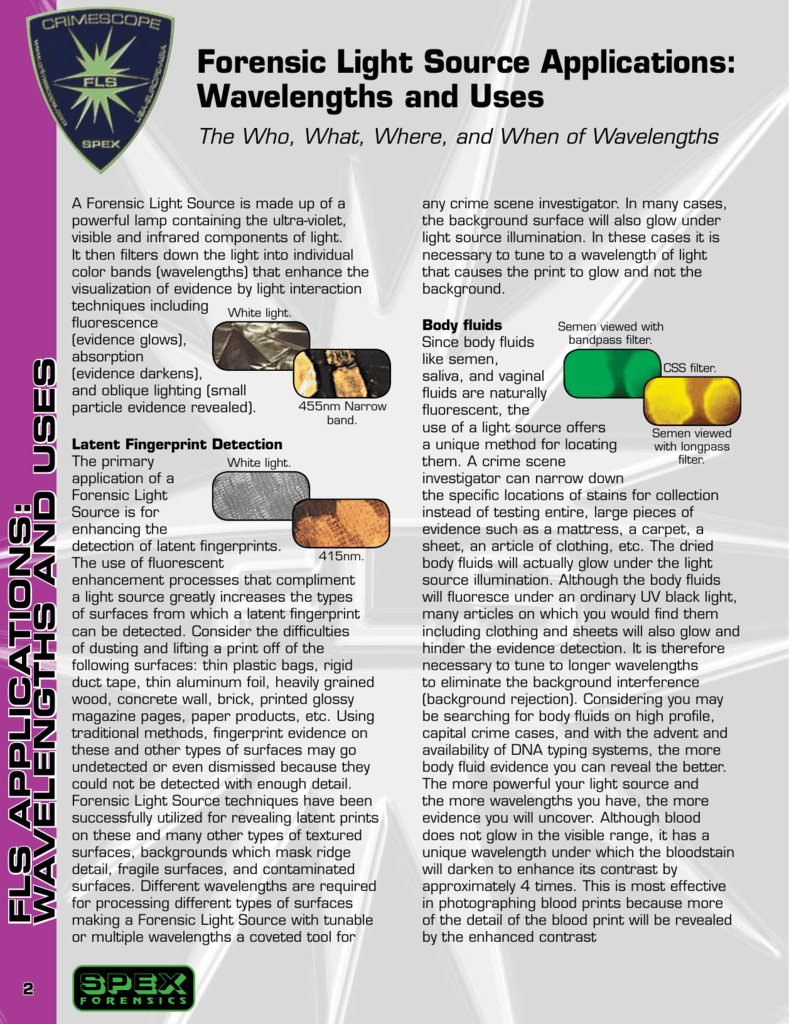Many body fluids organic materials and fibers will fluoresce under the forensic light source and other materials such as blood gunshot residue and some inks will absorb blue light to appear dark under the light source.
Forensic light source applications wavelengths and uses.
Wavelengths and uses the who what where and when of wavelengths 2 a forensic light source is made up of a powerful lamp containing the ultra violet visible and infrared components of light.
The use of fluorescent enhancement processes that compliment a light source greatly increases the types of surfaces from which a latent fingerprint can be detected.
Applications detection of body fluids with an alternate light source.
It then filters down the light into individual color bands wavelengths that.
To eliminate the fluorescence of the cleansers or detergents use a forensic light source tuned above 440nm.
In simple terms infrared spectroscopy is the use of infrared light to analyze the chemical bonds within molecules.
The proper colored goggle will block the specific wavelength of light emitted by the forensic or alternate light source allowing only the longer wavelength fluorescence to pass.
The primary application of a forensic light source is for enhancing the detection of latent fingerprints.
Horiba manufactures forensic instrumentation to collect and analyze evidence during the course of an investigation.
These substances are often not observable to the naked eye and especially if the surface was wiped down or cleaned.
An even more detailed use of infrared technology in forensics is infrared spectroscopy.
Forensic laboratory light sources.
Cyan green light help with fingerprints.
While the crime lite 8x4 is ideal for the visualization and enhancement of fingerprints the crime lite ml2 has applications including the detection of body fluids and marking up of evidence.
Instruments such as forensic light sources reflective uv and fingerprint imaging systems are designed to be used at the crime scene to collect and in the laboratory to analyze evidence.
Wavelengths and uses fls applications.
Forensic light source applications.
Each chemical bond within a molecule vibrates at a frequency that is unique to that bond much like a fingerprint.
Usually in forensic sciences ultraviolet uv light is used to induce fluorescence on many samples to identify and evaluate proofs ex.
Foxfury portable forensic light sources and lasers help visualize evidence and can be used in the field or in the lab.









